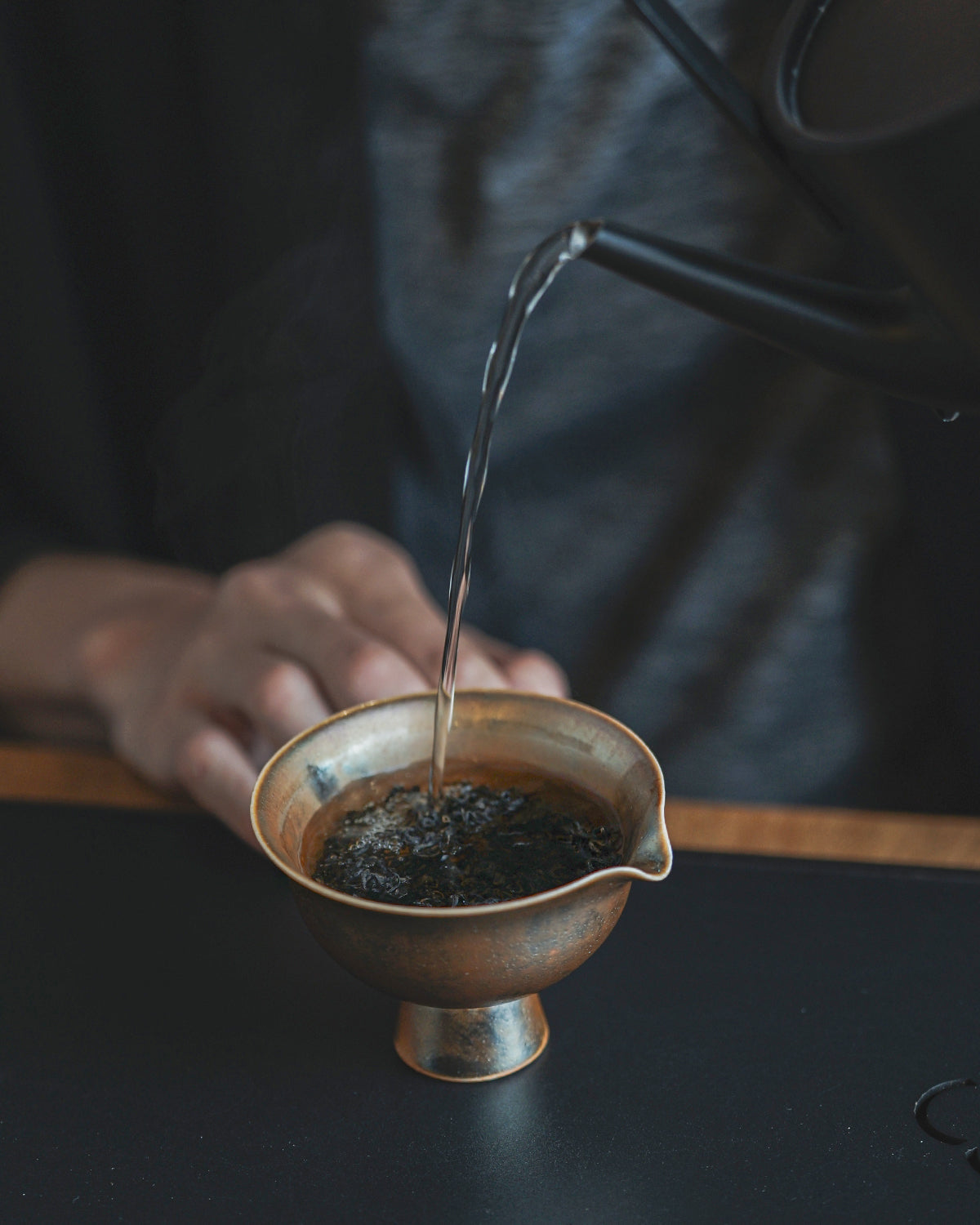What is black tea?
Black tea is the most popular type of tea in the world. Of all the categories of tea, black tea is the most heavily oxidised, giving it a sweet, mellow flavour with none of the grassiness of green tea. A high quality black tea is smooth and sweet and not too astringent.

Black tea is called red tea (紅茶 hong cha) in Chinese, because of its red liquor (whereas the British named it after the black colour of the fully oxidised leaves).
A brief history of black tea
While green tea has been the main type of tea produced and drunk in China since the beginning of tea, black tea was invented 300-500 years ago—some say, by mistake.
Legend has it that in the mid-17th century, an army from Jianxi set up camp at a tea farm in Tong Mu in Fujian. The tea producers were so busy hosting the army encampment, that the tea was neglected and left to oxidise much longer than intended. (Green tea is supposed to be heated to stop oxidation almost immediately after harvest.) The tea was deemed ruined, but the farmers wanted to try and sell it at the market for a small price, anyway. They tried smoking it over horsetail pinewood to ‘save it’. To their surprise, Dutch traders loved the tea (called 正山小種 Zheng Shan Xiao Zhong or Lapsang Souchong) and came back for more the next year. 
The traders found it kept its flavour well over long voyages back to Europe and was cheaper than green tea, because the Chinese considered it “damaged”. Demand for black tea in the West flourished, which increased black tea production in China.
To try and dismantle China’s monopoly over tea, the British went to spy on black tea production methods in Tong Mu and began producing their own in India. Meanwhile, they were still importing green tea from China. It wasn’t until 1843 that the British realised that green and black tea could be made from the same plant!

Meanwhile, in China, black tea was mainly produced for export purposes only and didn’t gain popularity in the domestic market until 2005 when a premium type of black tea was invented, called Jin Jun Mei.
How is black tea processed?
Making black tea is about achieving a high level of oxidation in the leaves. While the processing techniques differ vastly from tea to tea, we can say that most black teas go through these processing steps:
After being harvested, the tea leaves are left in a cool, shaded area to wilt and lose their moisture.

Once the moisture has been reduced to the desired level, the tea leaves are rolled vigorously to induce oxidation and break down the cell membranes.
The leaves are then put in a humid environment to encourage oxidation in a process called ‘wet-reddening’.
Many black teas are twisted in strips, or curled, and some are left unshaped (like our Keemun Maofeng, for example).
Once the desired level of oxidation has been achieved, the leaves are sorted, then dried in the oven before being packed and shipped.


Black teas from China
Keemun Black Tea
Keemun black tea (祁紅紅茶 Qimen Hong Cha) is the only black tea featured on China’s Ten Famous Teas list. It is made in Qimen, Anhui and is celebrated for its outstanding fragrance unrivaled by any other black tea. Lower grades of Keemun black tea are often used in English Breakfast black tea blends.
Try our top grade Keemun Xiangluo, Keemun Maofeng and Keemun Rose to experience the range of this delicious, chocolatey black tea.

Yunnan Gushu Black Tea
Yunnan Province is home to centuries-old tea trees (古樹 gu shu) which make for highly prized teas. Our Gushu Sundried Black Tea and Wild Gushu Black Tea are both from ancient trees, yielding deliciously sweet and fruity black teas.

Black teas from Taiwan
Red Jade
Grown in the scenic Sun Moon Lake area in Taiwan, Red Jade (紅玉 Hong Yu) is made from a new Taiwanese cultivar, known for giving a cooling sensation on the tongue, and has a bright citrusy aroma and complex flavour profile.

Red Jade with Bergamot (Organic)
This is our Asian take on Earl Grey tea. Standard Earl Grey is made of CTC (Crush, Tear, Curl) black tea from India mixed with bergamot oil, and brewed with a slice of lemon. Our version is made with whole leaf organic Red Jade black tea, layered with hand-shredded strips of bergamot. The result is a bold, citrusy black tea that needs no extra lemon.

Honey Scent Black Tea
Another experimental tea from Taiwan, Honey Scent Black Tea (蜜香紅茶 Mi Xiang Hong Cha) is a bug-bitten tea with a beautiful honey aroma and a long-lasting sweetness.
Black teas from India
Darjeeling First Flush
Darjeeling teas are known for their signature muscatel flavour. This ‘first flush’ is made of the finest new buds harvested in the early onset of spring, and is much less oxidised ('greener') than most black teas, making it difficult to categorise. 
Darjeeling Autumn Crescendo
A deliciously rich black tea, Darjeeling Autumn Crescendo is harvested in autumn—the third harvest or “flush” of the year and is stronger and more robust than its first flush sibling.

Black tea blends
Breakfast tea
The world’s most famous tea blend, English Breakfast is typically a blend of Assam, Kenyan and Ceylon black tea. However, breakfast blends change from one brand to the next, with different teas used in different quantities.
Our version of traditional breakfast tea, Plantation Breakfast is a delightfully full-bodied brew that is both familiar yet unique, with a robust, malty Assam base and a hint of smoky Keemun tea, topped off with a bright, fruity Red Jade.

Masala Chai
Every community in India has their own Masala Chai recipe. Our signature Masala Chai blend is made of a fine Assam black tea infused with a rare Keralan spice mix of cinnamon, ginger, cardamom, aniseed, cloves, black pepper and rose petals.

How to brew black tea
Black tea is probably the easiest to brew as it is quite resilient to high temperatures. We find the best range for most black teas is 90°C to 95°C as the nuanced sweet and fruity notes are more noticeable in that range.

Western style brewing tends to steep black tea for a longer time then sweeten it with milk and sugar. We prefer brewing it Chinese style in a gaiwan, with shorter steeping times but more infusions, as this style brings out its natural sweetness.
Take extra care when brewing blends like Plantation Breakfast or Masala Chai, which are made of CTC (Crush, Tear, Curl) tea rather than whole leaf, and can get bitter if over-steeped. It's best to brew these with a strainer to catch the small bits and pieces. They can also be enjoyed Western style with milk and sugar. Try it and see what you prefer!
Curious about other types of tea? Read on!



Leave a comment